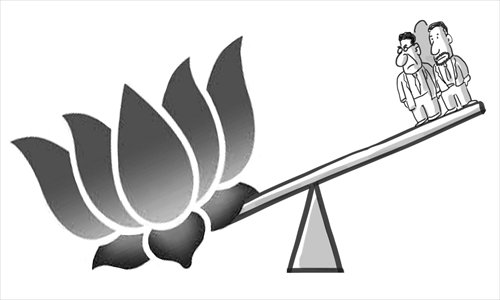My take in rediff: (http://www.rediff.com/news/column/nitin-a-gokhale-the-state-has-abdicated-its-responsbility-for-assam/20141229.htm)
The situation in Assam would be a farce, if it wasn't such a tragedy. Over 80 people, among them women and children, have been mercilessly massacred by a breakaway faction of a group that is purportedly in peace talks with the government.
Every year, for the past decade, the state has been witness to a massacre or a riot affecting innocent civilians. Each time, the State has got away lightly.
Statistics available with the terrorism portal satp.org reveal that the killings in Assam have never ceased, although the state government under veteran Congress leader Tarun Gogoi has claimed the return of peace for over a decade.
Yes, on the surface Assam appears calm; Guwahati and other towns have witnessed a boom in goods and services transactions; multi-storied buildings now dot Assam's capital. Shopping malls, multiplexes, fancy new restaurants have sprung up in large numbers in Guwahati.
But scratch the surface a bit, and the ugly truth is bared: Assam is still a violent state.
According to the statistics on satp.org, a total of 2,652 people (civilians, terrorists and security personnel) died in insurgency-related violence between 2004 and 2014. This does not include those killed in riots which are not infrequent in Assam.
So the fact that the number of killings in Assam over the last two years (423) has surpassed Jammu and Kashmir (378) should not come as a surprise to anyone watching the north-eastern state closely.
The sad reality is: The State has abdicated its responsibility in Assam for the past decade. Instead, it has chosen the path of least resistance and established a symbiotic relationship with the very perpetrators of violence, granting the rag-tag outfits the legitimacy they don't deserve.
Numerous accords, suspension of operations (SoOs) and cosy arrangements with non-State militias by the state government, actively encouraged by the complicity of the United Progressive Alliance-led central government, gave a free run to the beasts who call themselves insurgents.
Be it the accord with the Jewel Garlosa group of Dima Halong Daogah (DHD), a Dimasa tribal militia, raised by a cabinet minister in the Tarun Gogoi ministry to secure his base in the North Cachar Hills district, or the cosy arrangement with the ULFA (United Liberation Front of Asom), the NDFB (National Democratic Front of Bodoland) or a little-known rag-tag outfit called KLNLF (Karbi Longri NC Hills Liberation Front), the Tarun Gogoi government, with the active connivance of the Union home ministry, continued to molly-coddle the killers between 2008 and 2012.
Several instances come to mind. In October 2004, for instance, after killing 50 innocent non-Bodos, the NDFB asked Gogoi to call off operations against the outfit. The chief minister promptly obliged in order to facilitate 'peace' talks.
Gogoi's government also accepted without protest the NDFB's claim that it had on its rolls over 1,000 cadres when in reality it was decimated in the previous year's Operation All Clear in Bhutan. The tendency to inflate cadre strength is actually a strategy adopted by these groups to extract as much money from the ever-obliging governments as possible.
The same NDFB carried out one of the most heinous acts of terrorism, killing over 90 people in Guwahati in simultaneous bomb blasts (A confession here: I had got it wrong initially, while reporting the incident). Despite the outrageous killings, the government refused to call off the peace process with the NDFB.
The DHD, the KLNLF with barely 200 to 300 cadres extracted concessions way beyond their capabilities and influence. These killers have been showered with luxuries, hard cash running into several million rupees and treated with kid gloves by the law. They live in safe houses provided by the State, looked after as VIP guests, given all the facilities normally reserved for state guests.
The story is repeated with every militia named above.
The latest outrage, carried out by one of the NFDB's three factions, is nothing but a pressure tactic to gain importance.
Prime Minister Narendra Modi and Home Minister Rajnath Singh will have to treat these militias for what they are: Criminals armed with deadly weapons. Otherwise, nothing will distinguish the National Democratic Alliance government from the 10 year-long perfidy of the UPA in Assam.


